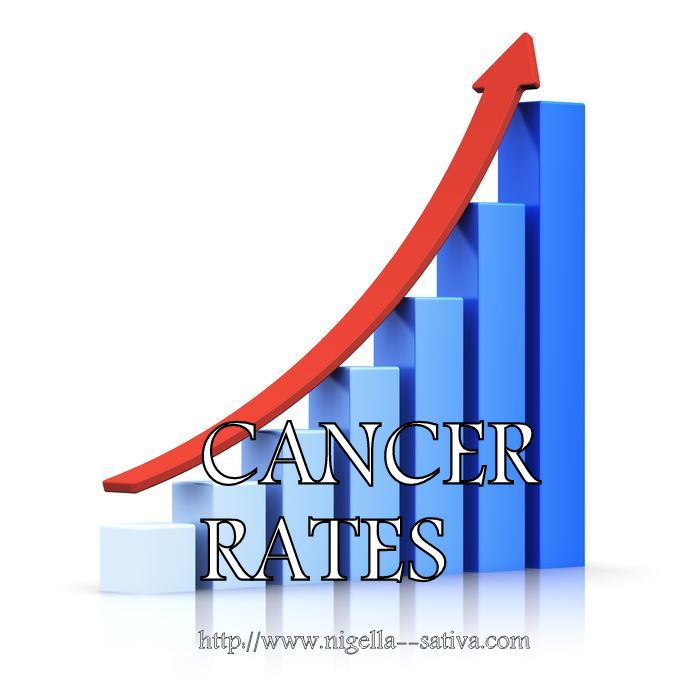- HOME - START HERE
- CONSULTATION SERVICES
- 911 EMERGENCY
- EBOOKS
- Store
- DOSAGES
- HOW TO TAKE
- ANTI-AGING
- CBD AND NIGELLA SATIVA
- RESEARCH SHOWS THAT CANCER RATES WILL RISE DRASTICALLY OVER THE COMING YEARS
- FIBRO CATEGORY
- HERPES CATEGORY
- HIV- Category
- Honey - Category
- Pets
- Top 20 Reasons to use Black Cumin Oil and Capsules
- STROKES CATEGORY
- WEIGHT LOSS CATEGORY
- ANSWER THE QUESTIONS
- Articles
- BLACK SEED OIL IS BETTER THAN TYLENOL FOR ARTHRITIS RELIEF
- Migraines - Headaches - 12 Remedies with Pictures
- My Protocol for Dementia Recovery
- PCOS and Nigella Sativa
- PRIVACY POLICY - GDPR COMPLIANT
- My Team
- About
- Healthy Articles
- Nigella Sativa Online Courses - Part 1
- Childhood Epilepsy
- Natural Diuretics
- Healing Effect on Sarcoidosis
- Nigella Sativa Respiratory Illness
- Cardiovascular Disease
- Depression and COVID19
- 12
- How to Use Nigella Sativa
- How Contagious is Leprosy
- Supporting Human Health - The Immunomodulator
- Nigella Sativa Cancer Ebook
- OK, I am a Muslim - Now What?
- Everything You Ever Wanted to Know About Black Seeds
- Islam Cancer Ebook
- DONATION
- Nigella sativa is an safe alternative Non-Hodgkin’s treatment option
- RESEARCH ON WHY YOU SHOULD HEAT NIGELLA SATIVA SEEDS
- Black Seed Cuisine Ebook
- IS THERE A CURE FOR LUPUS - NATURAL SOLUTIONS
- Black Seed Oil
- TURMERIC DETOX AND MORE
- MASTERS OF HEALING
- PAYMENT RECEIVED
- Non-clickable Page
- IRRITABLE BOWEL SYNDROME - NATURAL SOLUTIONS
- MY CANCER COLLECTION
- CONTACT
RESEARCH SHOWS THAT CANCER RATES WILL RISE DRASTICALLY OVER THE NEXT FEW YEARS
THIS ARTICLE IS COPYRIGHTED FOR NIGELLASATIVACENTER.COM. ALL RIGHTS RESERVED.
|
In 2015 over 8.8 Million people died worldwide as a result of cancer. Over the next 20 years the amount of people being diagnosed with cancer is set to rise to as many as 22 Million.
Cancer is not just one disease, but rather an umbrella term for a group of diseases. Cancer causes rapid and abnormal cell growth which can result in tumors and neoplasms in in different organs and parts of the body. When these abnormal cells grow and spread to other parts of the body it is referred to as metastasizing, which is the leading cause of death from cancer. |
Cancer does not discriminate, and can affect the young and old, men and women, in all corners of society. Lung, Colon, Prostate and Breast Cancers are the leading causes for deaths from cancer.
There are however, many types of cancer that can be avoided by a healthy lifestyle, what we eat, avoiding tobacco and alcohol. There are also some foods and supplements that have shown promising results in helping to prevent Cancer, as well as treat it if you are one of the unlucky ones who are affected.
As many as one in two people will be affected by cancer in their lifetime. Knowing your family history is important as this will indicate if you have any pre-disposition to some types of cancer. This is not the only risk factor however. Other risk factors include age, lifestyle, ethnicity and environment.
There are however, many types of cancer that can be avoided by a healthy lifestyle, what we eat, avoiding tobacco and alcohol. There are also some foods and supplements that have shown promising results in helping to prevent Cancer, as well as treat it if you are one of the unlucky ones who are affected.
As many as one in two people will be affected by cancer in their lifetime. Knowing your family history is important as this will indicate if you have any pre-disposition to some types of cancer. This is not the only risk factor however. Other risk factors include age, lifestyle, ethnicity and environment.
Reports show that cancer rates will rise overall, but the increase for women will be much more significant.
*Top 7 Most Deadliest Cancers In Men
*Top 7 Most Deadliest Cancers In Men
- Lung cancer
- Prostate Cancer
- Colorectal Cancer
- Liver Cancer
- Bladder
- Melanoma
- Esophageal
- *Top 6 Most Deadliest Cancers in Women
- Lung
- Breast
- Pancreatic
- Colorectal
- Ovarian
- Non-Hodgkin Lymphoma
Lung Cancer - Top Cancers for Both Men and Women
Lung cancer is one of the more well-known cancers because it is aggressive and its symptoms are more visible. The danger with lung cancer, as with many types of cancer, is not getting diagnosed early enough.
With some other types of Cancer, you may not know you have it, because you are not showing symptoms, or if you are, they are mild so you don’t go to the doctor.
With Lung Cancer, often patients will present with a cough or shortness of breath and it will be shrugged off as ‘just a cough’, or simply that the person is unfit. By the time the patient discovers that they have cancer, it has already metastasized. This means that it has spread to other parts of the body. Lung cancer is the number one, deadliest cancer in the US with mortality rates in 2017 set to exceed 155,000 deaths.
Lung cancer is one of the more well-known cancers because it is aggressive and its symptoms are more visible. The danger with lung cancer, as with many types of cancer, is not getting diagnosed early enough.
With some other types of Cancer, you may not know you have it, because you are not showing symptoms, or if you are, they are mild so you don’t go to the doctor.
With Lung Cancer, often patients will present with a cough or shortness of breath and it will be shrugged off as ‘just a cough’, or simply that the person is unfit. By the time the patient discovers that they have cancer, it has already metastasized. This means that it has spread to other parts of the body. Lung cancer is the number one, deadliest cancer in the US with mortality rates in 2017 set to exceed 155,000 deaths.
Colorectal cancer - Top Cancer on our list for Both Men and Women
Colorectal cancer is one of the most detectable, yet still has one of the highest mortality rates of all cancers. In 2017 it is anticipated that more than 50,000 people will die as a direct result of developing Colorectal Cancer.
Colorectal cancer occurs when polyps form in the rectum or colon. A polyp is an abnormal growth, that in many cases can form in the colon for many years without causing any problems. However, in some cases, the polyps can become cancerous, and when they do, they can spread quickly.The biggest risk factor for colon cancer is not gender, but age. More than 90% of colon and rectal cancers detected, are in patients aged over 50yrs of age.
Detecting the disease is a quite simple and regular screen should be undertaken by anyone over the age of 50yrs, especially those with a family history of cancer or Irritable Bowel Syndrome (IBS).
Colorectal cancer is one of the most detectable, yet still has one of the highest mortality rates of all cancers. In 2017 it is anticipated that more than 50,000 people will die as a direct result of developing Colorectal Cancer.
Colorectal cancer occurs when polyps form in the rectum or colon. A polyp is an abnormal growth, that in many cases can form in the colon for many years without causing any problems. However, in some cases, the polyps can become cancerous, and when they do, they can spread quickly.The biggest risk factor for colon cancer is not gender, but age. More than 90% of colon and rectal cancers detected, are in patients aged over 50yrs of age.
Detecting the disease is a quite simple and regular screen should be undertaken by anyone over the age of 50yrs, especially those with a family history of cancer or Irritable Bowel Syndrome (IBS).
Liver Cancer - Top Cancer on our Men's List
Your liver is one of the hardest working organs in your body. It processes everything that you consume and filters toxins out of your blood. Drinking alcohol, eating fatty foods and consuming excessive amounts of salt can make your liver work harder than it needs to.
Cancer can form in your liver when unhealthy cells mutate and spread.
Those who have been infected with Hepatitis B and C have higher risk of being diagnosed with Liver Cancer. Heavy alcoholics are also in the high-risk category.
Your liver is one of the hardest working organs in your body. It processes everything that you consume and filters toxins out of your blood. Drinking alcohol, eating fatty foods and consuming excessive amounts of salt can make your liver work harder than it needs to.
Cancer can form in your liver when unhealthy cells mutate and spread.
Those who have been infected with Hepatitis B and C have higher risk of being diagnosed with Liver Cancer. Heavy alcoholics are also in the high-risk category.
Bladder Cancer - Top Cancer on our Men's List
This is another lesser known cancer, with high mortality rate. The most common sign or symptom that leads to diagnosis, is blood in the patient’s urine. Bladder Cancer occurs when cell that line the bladder become cancerous.
While most people are aware that smoke increases your risk of Lung Cancer, you might be surprised to know that smoking also increases your risk of Bladder Cancer! In fact, smokers are 3 times more likely to develop Bladder Cancer than their non-smoking counterparts.
This is another lesser known cancer, with high mortality rate. The most common sign or symptom that leads to diagnosis, is blood in the patient’s urine. Bladder Cancer occurs when cell that line the bladder become cancerous.
While most people are aware that smoke increases your risk of Lung Cancer, you might be surprised to know that smoking also increases your risk of Bladder Cancer! In fact, smokers are 3 times more likely to develop Bladder Cancer than their non-smoking counterparts.
Esophageal Cancer - Top Cancer on the Men's Side
The esophagus is the tube that your food travels along to get from your mouth to your stomach. Smoking tobacco products is a big risk factor, followed by alcohol consumption. Another risk factor for Esophageal Cancer that many people don’t think of is Bulimia Nervosa. Bulimia Nervosa is an eating disorder where the person afflicted will vomit up any food they have eaten in an attempt to avoid weight gain.
Stomach acid belongs in the stomach, it can do nasty things to your esophagus, mouth and teeth when you frequently vomit. Damage done to the esophagus from months or even years of forced vomiting can cause irreparable damage to the cells lining walls that can then lead to cancer. Up to 85% of people diagnosed with Esophageal cancer will die within 5 years.
The esophagus is the tube that your food travels along to get from your mouth to your stomach. Smoking tobacco products is a big risk factor, followed by alcohol consumption. Another risk factor for Esophageal Cancer that many people don’t think of is Bulimia Nervosa. Bulimia Nervosa is an eating disorder where the person afflicted will vomit up any food they have eaten in an attempt to avoid weight gain.
Stomach acid belongs in the stomach, it can do nasty things to your esophagus, mouth and teeth when you frequently vomit. Damage done to the esophagus from months or even years of forced vomiting can cause irreparable damage to the cells lining walls that can then lead to cancer. Up to 85% of people diagnosed with Esophageal cancer will die within 5 years.
Leukemia
Often associated with young children, people of all ages can be affected by Leukemia. Leukemia occurs when your body’s bone marrow cannot produce enough healthy white blood cells for your immune system to function correctly. Instead, your body produces faulty white blood cells that can’t fight infections or disease.
Symptoms often present as flu-like, with the patient feeling tired, or run-down. This can also lead to the disease being misdiagnosed for long periods of time.
Read My Latest Article on Nigella Sativa and Leukemia
Often associated with young children, people of all ages can be affected by Leukemia. Leukemia occurs when your body’s bone marrow cannot produce enough healthy white blood cells for your immune system to function correctly. Instead, your body produces faulty white blood cells that can’t fight infections or disease.
Symptoms often present as flu-like, with the patient feeling tired, or run-down. This can also lead to the disease being misdiagnosed for long periods of time.
Read My Latest Article on Nigella Sativa and Leukemia
Pancreatic cancer
This is another devastating disease. Most people probably don’t even know what their pancreas does, until it’s not functioning as it should. The pancreas is responsible for producing insulin, regulate your digestive functions and maintain your metabolism.
Glands in your pancreas produce digestive enzymes that your body uses to break down animal fats, proteins and starches. Early signs that you may have Pancreatic cancer include digestive problems, loss of appetite and jaundice. Diabetics are at a higher risk of developing pancreatic cancer.
Read: Is there a cure for Pancreatic Cancer
This is another devastating disease. Most people probably don’t even know what their pancreas does, until it’s not functioning as it should. The pancreas is responsible for producing insulin, regulate your digestive functions and maintain your metabolism.
Glands in your pancreas produce digestive enzymes that your body uses to break down animal fats, proteins and starches. Early signs that you may have Pancreatic cancer include digestive problems, loss of appetite and jaundice. Diabetics are at a higher risk of developing pancreatic cancer.
Read: Is there a cure for Pancreatic Cancer
Breast Cancer
While most people will be familiar with breast cancer you may be surprised to know that this is not the number one cancer to effect women. Breast cancer is serious however for overall mortality rates, breast cancer comes in at second place to Lung Cancer.
Also it is important to note that breast cancer is not just a women’s’ disease, men can get breast cancer too! The biggest risk factor for breast cancer is your family history. Not having a family history does not give you a free pass, anyone can get cancer.
Read: Black Cumin is Breast Cancer's Worse Enemy
While most people will be familiar with breast cancer you may be surprised to know that this is not the number one cancer to effect women. Breast cancer is serious however for overall mortality rates, breast cancer comes in at second place to Lung Cancer.
Also it is important to note that breast cancer is not just a women’s’ disease, men can get breast cancer too! The biggest risk factor for breast cancer is your family history. Not having a family history does not give you a free pass, anyone can get cancer.
Read: Black Cumin is Breast Cancer's Worse Enemy
Ovarian and Cervical Cancers - Top Cancer for Women
Ok, so these ones are just for the girls. Some forms of cervical cancer have been attributed to the HPV virus, for which there is now a vaccine. The vaccine has didn’t get the chance to only been around for the last decade or so, meaning that if you’re in your 30’s or older then you probably didn’t have to opportunity to benefit from it. Cervical cancer IS treatable if caught early, but you need to have regular screenings.
Ovarian cancer is similar to breast cancer in that family history is a big risk factor, age also being taken into consideration. Ovarian cancers are more frequently diagnosed in women after menopause.
Ok, so these ones are just for the girls. Some forms of cervical cancer have been attributed to the HPV virus, for which there is now a vaccine. The vaccine has didn’t get the chance to only been around for the last decade or so, meaning that if you’re in your 30’s or older then you probably didn’t have to opportunity to benefit from it. Cervical cancer IS treatable if caught early, but you need to have regular screenings.
Ovarian cancer is similar to breast cancer in that family history is a big risk factor, age also being taken into consideration. Ovarian cancers are more frequently diagnosed in women after menopause.
Cancer is Big Business
Prevention, treatments and further research towards cures makes Cancer a big industry for business. Across the USA alone, an estimate of over 150 Billion dollars will be spent directly on cancer in 2020. Hospital treatments don’t come cheap in the USA. You know the old saying “Prevention is better than cure”. Keep reading to learn the best ways to keep the dreaded ‘Cancer’ away.
So, what can be done to prevent it?
While research for a cure is still ongoing, it is vitally important to lead a healthy lifestyle and avoid cancer causing substances as much as possible. This includes Tobacco products and Alcohol. Some things you can’t avoid, like your age (unfortunately) and your ethnicity.
While some people may get offended by being racially profiled, it is quite important for your doctor to know your family heritage. Some types of cancer are more prevalent in different ethnic groups. This is a scientific fact. You can’t avoid it, but you can be aware of it and keep an eye out for early warning signs.
Make sure that you get plenty of exercise and fresh air, regular full-night’s sleep and a healthy diet. Studies suggest a diet full of brightly colored fresh fruits and vegetables can help stave of many types of cancer. Add to this nutrient rich natural supplements, herbs and vitamins and you’re giving yourself the best chance for a long, and healthy life.
Diet plays a huge part in healthy living to prevent not only cancer, but also a range of other illnesses. Cut back, or completely avoid if you can the alcohol, drugs and tobacco products. Ditch the fast food that is laden with saturated fats, refined sugars and salt overload.
What are my options if I do get cancer?
Early diagnosis provides your best chance of survival. If you have a family history, or fall into any of the other risk factors mentioned in this article, make sure you visit your health care practitioner to discuss your concerns.
There are many over the counter and herbal remedies that can be used to slow tumor growth, and even shrink tumors. Some alternative treatments like Nigella Sativa can even help you avoid cancer in the first place, as well as treat tumors if you do get them. For other treatment options check out: Alternative Therapies that Shrink Tumors.
If you are diagnosed with cancer, Don’t Panic! Yes, it’s scary. Yes, the statistics don’t look good. But there is something you can do. There are many treatments available for you to help you beat the Cancer.
*Top cancer death rates for men and women according to the CDC
https://www.cdc.gov/cancer/dcpc/data/men.htm
Links;
https://www.cancer.org/latest-news/cancer-statistics-report-death-rate-down-23-percent-in-21-years.html
http://scienceblog.cancerresearchuk.org/2015/02/04/why-are-cancer-rates-increasing/
http://www.mayoclinic.org/diseases-conditions/leukemia/basics/definition/con-20024914
https://www.cancer.gov/types
http://www.cancerresearchuk.org/health-professional/cancer-statistics/statistics-by-cancer-type/oesophageal-cancer/survival
https://costprojections.cancer.gov/expenditures.html
http://www.who.int/mediacentre/factsheets/fs297/en/
http://www.prevention.com/health/5-most-common-types-of-cancer-in-women
Prevention, treatments and further research towards cures makes Cancer a big industry for business. Across the USA alone, an estimate of over 150 Billion dollars will be spent directly on cancer in 2020. Hospital treatments don’t come cheap in the USA. You know the old saying “Prevention is better than cure”. Keep reading to learn the best ways to keep the dreaded ‘Cancer’ away.
So, what can be done to prevent it?
While research for a cure is still ongoing, it is vitally important to lead a healthy lifestyle and avoid cancer causing substances as much as possible. This includes Tobacco products and Alcohol. Some things you can’t avoid, like your age (unfortunately) and your ethnicity.
While some people may get offended by being racially profiled, it is quite important for your doctor to know your family heritage. Some types of cancer are more prevalent in different ethnic groups. This is a scientific fact. You can’t avoid it, but you can be aware of it and keep an eye out for early warning signs.
Make sure that you get plenty of exercise and fresh air, regular full-night’s sleep and a healthy diet. Studies suggest a diet full of brightly colored fresh fruits and vegetables can help stave of many types of cancer. Add to this nutrient rich natural supplements, herbs and vitamins and you’re giving yourself the best chance for a long, and healthy life.
Diet plays a huge part in healthy living to prevent not only cancer, but also a range of other illnesses. Cut back, or completely avoid if you can the alcohol, drugs and tobacco products. Ditch the fast food that is laden with saturated fats, refined sugars and salt overload.
What are my options if I do get cancer?
Early diagnosis provides your best chance of survival. If you have a family history, or fall into any of the other risk factors mentioned in this article, make sure you visit your health care practitioner to discuss your concerns.
There are many over the counter and herbal remedies that can be used to slow tumor growth, and even shrink tumors. Some alternative treatments like Nigella Sativa can even help you avoid cancer in the first place, as well as treat tumors if you do get them. For other treatment options check out: Alternative Therapies that Shrink Tumors.
If you are diagnosed with cancer, Don’t Panic! Yes, it’s scary. Yes, the statistics don’t look good. But there is something you can do. There are many treatments available for you to help you beat the Cancer.
*Top cancer death rates for men and women according to the CDC
https://www.cdc.gov/cancer/dcpc/data/men.htm
Links;
https://www.cancer.org/latest-news/cancer-statistics-report-death-rate-down-23-percent-in-21-years.html
http://scienceblog.cancerresearchuk.org/2015/02/04/why-are-cancer-rates-increasing/
http://www.mayoclinic.org/diseases-conditions/leukemia/basics/definition/con-20024914
https://www.cancer.gov/types
http://www.cancerresearchuk.org/health-professional/cancer-statistics/statistics-by-cancer-type/oesophageal-cancer/survival
https://costprojections.cancer.gov/expenditures.html
http://www.who.int/mediacentre/factsheets/fs297/en/
http://www.prevention.com/health/5-most-common-types-of-cancer-in-women
|
COME JOIN MY MEMBERSHIP GROUP - DO YOU MISS ME? THE COST IS $9.95 PER MONTH. LEARN THE DEEP SECRETS OF BEING WELL.
PAYMENT LINK HERE |
STORE TESTIMONY CONTACT EBOOKS ABOUT PAGE PRIVATE POLICYAmazon Affiliate Disclosure
https://www.nigellasativacenter.com is a participant in the Amazon Services LLC Associates Program, an affiliate advertising program designed to provide a means for website owners to earn advertising fees by advertising and linking to amazon(.com, .co.uk, .ca etc) and any other website that may be affiliated with Amazon Service LLC Associates Program. “Amazon and the Amazon logo are trademarks of Amazon.com, Inc. or its affiliates.” Please note I am also an affiliate for Mountain Rose Herbs, , Shareasale and More. Please see our full disclosure here: Disclaimer: The information on this page and on this website has not been evaluated by the FDA. We do not diagnose, treat, cure or prevent illness or disease - instead, we try to help people learn how to do so themselves. Anyone who believes they have a serious medical condition or health issue should seek diagnoses from a qualified medical professional before making any decisions on how to best address their health. Furthermore, anyone contemplating using any products or information on this website must accept such use as experimental and voluntary. No claims are made regarding the therapeutic use of the products or information on this website and all products featured or sold on this website must be considered nutritional supplements only. -
Copyright Protected - Nigella Sativa.com - 2022-2025 - All Rights Reserved - Any infringe on our copyright will be prosecuted to the fullest extent of the law.
|
OWNER: SAMANTHA DAVIS
WEBSITE: BASED ON EVIDENCE ADDRESS: PO BOX 437, ZARGA, JORDAN 13110 PHONE: +962-53923471 HOURS: 5PM - 12AM - NY;TIME EMAIL: naturalliving [email protected] CONSULTATION FEES 1 STOP CENTER IS BASED ON ALL MODALITIES OF HEALING, NOT JUST NIGELLA SATIVA |
- HOME - START HERE
- CONSULTATION SERVICES
- 911 EMERGENCY
- EBOOKS
- Store
- DOSAGES
- HOW TO TAKE
- ANTI-AGING
- CBD AND NIGELLA SATIVA
- RESEARCH SHOWS THAT CANCER RATES WILL RISE DRASTICALLY OVER THE COMING YEARS
- FIBRO CATEGORY
- HERPES CATEGORY
- HIV- Category
- Honey - Category
- Pets
- Top 20 Reasons to use Black Cumin Oil and Capsules
- STROKES CATEGORY
- WEIGHT LOSS CATEGORY
- ANSWER THE QUESTIONS
- Articles
- BLACK SEED OIL IS BETTER THAN TYLENOL FOR ARTHRITIS RELIEF
- Migraines - Headaches - 12 Remedies with Pictures
- My Protocol for Dementia Recovery
- PCOS and Nigella Sativa
- PRIVACY POLICY - GDPR COMPLIANT
- My Team
- About
- Healthy Articles
- Nigella Sativa Online Courses - Part 1
- Childhood Epilepsy
- Natural Diuretics
- Healing Effect on Sarcoidosis
- Nigella Sativa Respiratory Illness
- Cardiovascular Disease
- Depression and COVID19
- 12
- How to Use Nigella Sativa
- How Contagious is Leprosy
- Supporting Human Health - The Immunomodulator
- Nigella Sativa Cancer Ebook
- OK, I am a Muslim - Now What?
- Everything You Ever Wanted to Know About Black Seeds
- Islam Cancer Ebook
- DONATION
- Nigella sativa is an safe alternative Non-Hodgkin’s treatment option
- RESEARCH ON WHY YOU SHOULD HEAT NIGELLA SATIVA SEEDS
- Black Seed Cuisine Ebook
- IS THERE A CURE FOR LUPUS - NATURAL SOLUTIONS
- Black Seed Oil
- TURMERIC DETOX AND MORE
- MASTERS OF HEALING
- PAYMENT RECEIVED
- Non-clickable Page
- IRRITABLE BOWEL SYNDROME - NATURAL SOLUTIONS
- MY CANCER COLLECTION
- CONTACT







